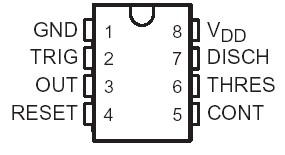TLC551: Features: · Very Low Power Consumption 1 mW Typ at VDD = 5 V· Capable of Operation in Astable Mode· CMOS Output Capable of Swinging Rail to Rail· High Output-Current Capability Sink 100 mA Typ Sourc...
floor Price/Ceiling Price
- Part Number:
- TLC551
- Supply Ability:
- 5000
Price Break
- Qty
- 1~5000
- Unit Price
- Negotiable
- Processing time
- 15 Days
SeekIC Buyer Protection PLUS - newly updated for 2013!
- Escrow Protection.
- Guaranteed refunds.
- Secure payments.
- Learn more >>
Month Sales
268 Transactions
Payment Methods
All payment methods are secure and covered by SeekIC Buyer Protection PLUS.

 TLC551 Data Sheet
TLC551 Data Sheet








